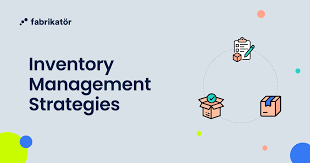Introduction
In today’s highly competitive business environment, managing inventory effectively is not just a logistics task—it’s a strategic imperative. A well-designed business inventory strategy ensures that a company can meet customer demand, minimize costs, and operate efficiently. Whether you’re running a retail store, manufacturing unit, or an e-commerce platform, the success of your operations largely depends on how well you manage your inventory. This article explores the key components, benefits, and best practices of business inventory strategy, offering actionable insights for small businesses and large enterprises alike.
What is a Business Inventory Strategy?
A business inventory strategy refers to the methods and practices used to manage, control, and optimize inventory levels. This includes determining how much stock to keep, when to reorder, and how to store items efficiently. A sound inventory strategy aligns with a company’s overall business objectives and helps maintain the right balance between supply and demand.
Importance of a Robust Inventory Strategy
- Customer Satisfaction: Ensures product availability and timely delivery.
- Cost Reduction: Minimizes storage costs, obsolescence, and stockouts.
- Operational Efficiency: Enhances workflow and reduces waste.
- Cash Flow Optimization: Prevents over-investment in stock.
- Data-Driven Decisions: Provides insights for better forecasting and planning.
Types of Inventory
Understanding the types of inventory is crucial for developing a strategic approach:
- Raw Materials: Basic materials used in the production process.
- Work-in-Progress (WIP): Items that are in the process of being manufactured.
- Finished Goods: Products ready for sale.
- Maintenance, Repair, and Operations (MRO) Goods: Supplies used in the production process but not part of the final product.
Core Components of an Effective Inventory Strategy
- Demand Forecasting
- Analyze historical sales data.
- Use predictive analytics.
- Monitor market trends.
- Inventory Turnover Ratio
- Measure how frequently inventory is sold and replaced.
- High turnover indicates strong sales; low turnover may suggest overstocking or weak demand.
- Reorder Point (ROP)
- The inventory level at which a new order should be placed.
- Calculated using average daily usage and lead time.
- Safety Stock
- Buffer inventory to prevent stockouts due to demand fluctuations.
- Economic Order Quantity (EOQ)
- The optimal order quantity that minimizes total inventory costs.
- ABC Analysis
- Categorize inventory into three groups:
- A: High-value, low-quantity
- B: Moderate-value, moderate-quantity
- C: Low-value, high-quantity
- Categorize inventory into three groups:
- Just-In-Time (JIT)
- Receive goods only when needed in the production process.
- Reduces carrying costs but requires precise coordination.

Inventory Management Techniques
- First-In, First-Out (FIFO)
- Oldest inventory is sold first; ideal for perishable goods.
- Last-In, First-Out (LIFO)
- Most recently produced items are sold first; used for items with rising prices.
- Batch Tracking
- Track groups of items for quality control and recall purposes.
- Drop Shipping
- Products are shipped directly from the supplier to the customer.
- Reduces storage needs.
- Consignment Inventory
- Supplier retains ownership until the product is sold.
Role of Technology in Inventory Strategy
- Inventory Management Software
- Automates tracking, reordering, and reporting.
- Popular tools: NetSuite, Zoho Inventory, TradeGecko.
- Barcode Scanning and RFID
- Enhances tracking accuracy.
- Cloud-Based Systems
- Real-time access and collaboration.
- AI and Machine Learning
- Improves forecasting and decision-making.
- IoT (Internet of Things)
- Monitors inventory conditions such as temperature and humidity.
Developing a Customized Inventory Strategy
- Assess Business Needs
- Consider product type, demand variability, and lead times.
- Set Clear Goals
- Define KPIs like turnover rate, fill rate, and carrying cost.
- Choose the Right Tools
- Select technology that integrates with existing systems.
- Train Your Team
- Ensure employees understand inventory processes and tools.
- Monitor and Adjust
- Continuously evaluate performance and adapt as needed.
Challenges in Inventory Strategy
- Inaccurate Forecasting
- Supplier Reliability
- Inventory Shrinkage (theft, damage, errors)
- Obsolete Inventory
- Scalability Issues
Best Practices for Inventory Optimization
- Regular Audits
- Perform cycle counts and full audits.
- Use KPIs
- Inventory Accuracy Rate, Order Cycle Time, Backorder Rate.
- Maintain Vendor Relationships
- Ensure consistent supply and favorable terms.
- Adopt Lean Principles
- Eliminate waste and improve efficiency.
- Implement Multi-Warehouse Management
- Optimize inventory across locations.
Case Study: Inventory Strategy in Action
Company: EcoGear, an eco-friendly outdoor gear retailer
Challenge:
- Overstocking on seasonal items
- Frequent stockouts of best-sellers
Solution:
- Implemented demand forecasting software
- Adopted ABC analysis
- Set automated reorder points
Results:
- Reduced holding costs by 20%
- Increased order fulfillment rate by 30%
- Improved customer satisfaction
Conclusion
A strategic approach to inventory management is vital for business success. By understanding inventory types, leveraging technology, and implementing best practices, companies can optimize operations, reduce costs, and enhance customer satisfaction. A well-executed inventory strategy not only supports day-to-day activities but also provides a competitive edge in a fast-paced market. Whether you’re a startup or an established enterprise, investing time and resources into developing a robust inventory strategy will yield significant long-term benefits.

